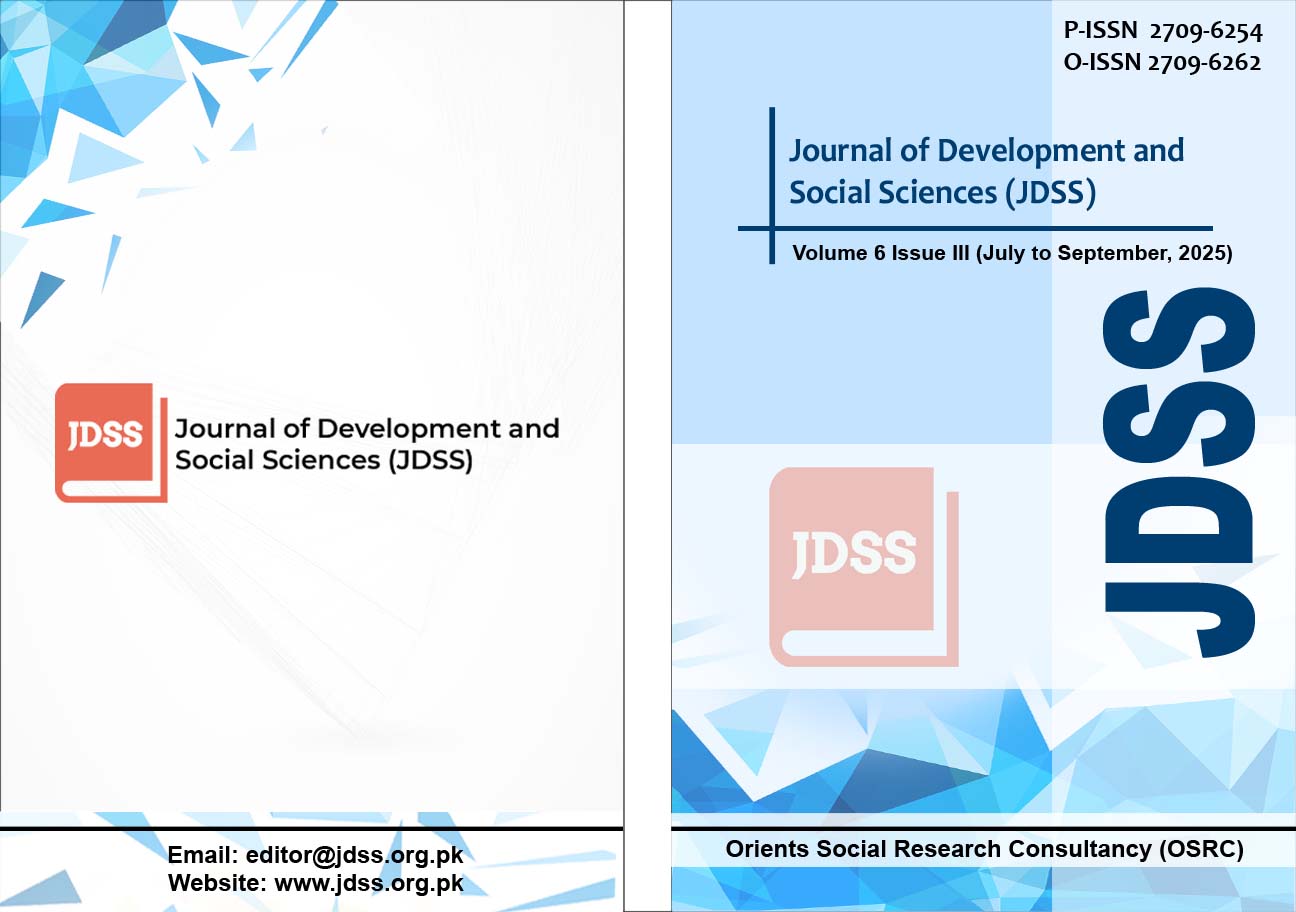Maintenance of Wives and Children in Pakistani Law: An In-Depth Legal Review
DOI:
https://doi.org/10.47205/jdss.2025(6-III)51Keywords:
Wife Maintenance, Children Maintenance, Obligation of Husband, Iddat, Interim MaintenanceAbstract
This academic review analyses the Pakistani law of maintenance (nafaqah) for wives and children, tracing its historical evolution from colonial Section 488 of the Code of Criminal Procedure, 1898, to the current framework under the Muslim Family Laws Ordinance, 1961 (MFLO) and the West Pakistan Family Courts Act, 1964. It synthesises Islamic jurisprudential principles applied by Pakistani courts with statutory text and leading precedents on scope, duration, and parties obligated. The paper reviews key judicial themes, including interim maintenance, annual indexation, discovery of means, and strike-off of defence for default. It also examines persistent gaps, such as illegitimacy, post-iddat support, and practical hurdles in execution, and proposes reforms, including clearer statutory definitions, guidelines formulated for quantum, stronger enforcement tools, and social-policy supports. The analysis aims to provide a rigorous, practice‑relevant roadmap for litigants, judges, advocates and policymakers. This research analyses the gaps between the theory and practice and the enforcement mechanism of the decree for maintenance within Pakistan and outside Pakistan.
Downloads
Published
Details
-
Abstract Views: 462
PDF Downloads: 205
How to Cite
Issue
Section
License
Copyright (c) 2025 Journal of Development and Social Sciences

This work is licensed under a Creative Commons Attribution-NonCommercial 4.0 International License.

ORIENTS SOCIAL RESEARCH CONSULTANCY (OSRC) & Journal of Development and Social Sciences (JDSS) adheres to Creative Commons Attribution-Non Commercial 4.0 International License. The authors submitting and publishing in JDSS agree to the copyright policy under creative common license 4.0 (Attribution-Non Commercial 4.0 International license). Under this license, the authors published in JDSS retain the copyright including publishing rights of their scholarly work and agree to let others remix, tweak, and build upon their work non-commercially. All other authors using the content of JDSS are required to cite author(s) and publisher in their work. Therefore, ORIENTS SOCIAL RESEARCH CONSULTANCY (OSRC) & Journal of Development and Social Sciences (JDSS) follow an Open Access Policy for copyright and licensing.







